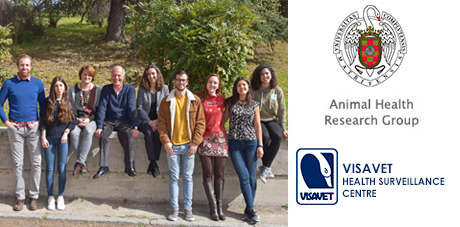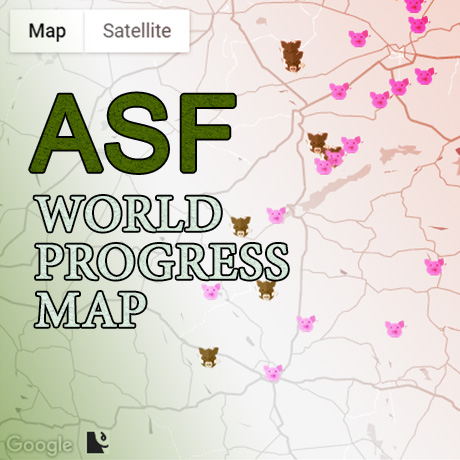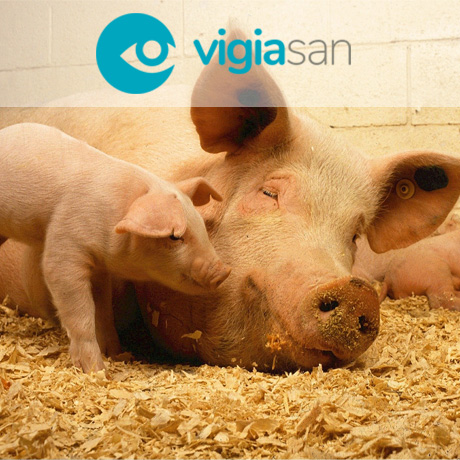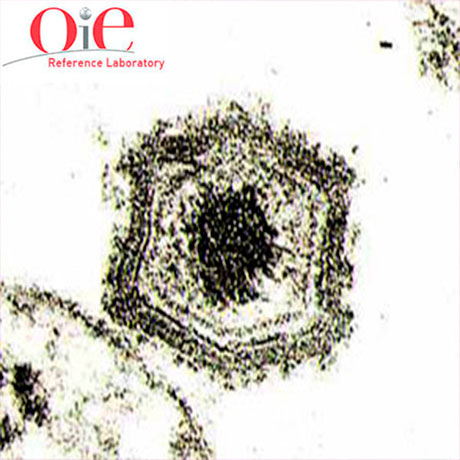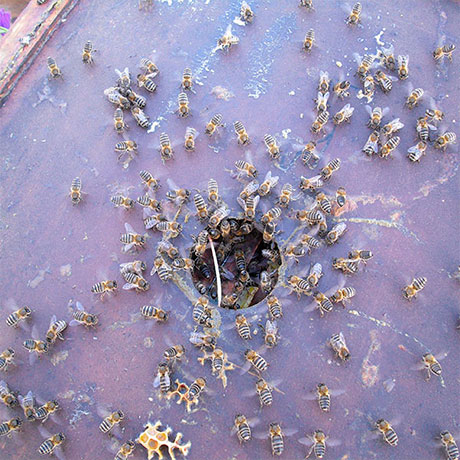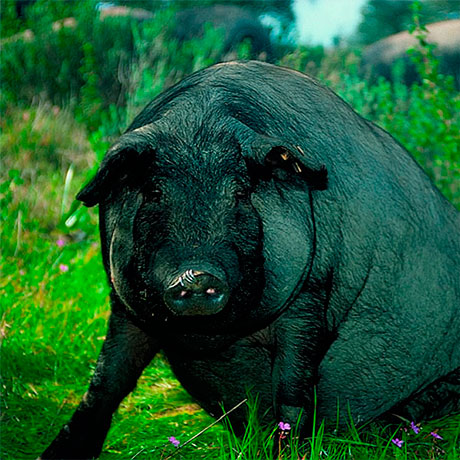Natural Immunity of Sheep and Lambs Against the Schmallenberg Virus Infection
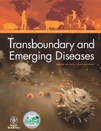 New article in Transboundary and Emerging Diseases journal.
New article in Transboundary and Emerging Diseases journal.
Sánchez-Vizcaíno was appointed Honorary Member of the Academy of Veterinary of Murcia
 Professor José Manuel Sánchez Vizcaíno was appointed Honorary Member of the Academy of Veterinary of Murcia.
Professor José Manuel Sánchez Vizcaíno was appointed Honorary Member of the Academy of Veterinary of Murcia.
The inauguration will take place on June 4 at 19hrs in the hall of the Archaeological Museum of Murcia , during which honoree will pronounce the speach: A Life Surrounded by Viruses.
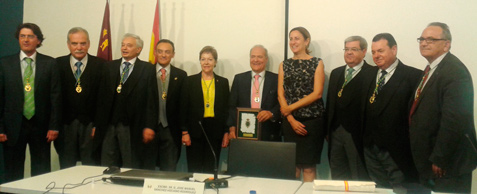
4th Workshop Rapidia-Field Madrid
 Last May 22 was held at the Faculty of Veterinary Medicine UCM the International Workshop of the European Project Rapidia-Field “Rapid field diagnostics and screening in veterinary medicine”. The workshop was organized by the research group Suat-Visavet and included the participation of International Instiutions ( like the OIE) , government representatives from different countries and representatives from the industry and the animal production.
Last May 22 was held at the Faculty of Veterinary Medicine UCM the International Workshop of the European Project Rapidia-Field “Rapid field diagnostics and screening in veterinary medicine”. The workshop was organized by the research group Suat-Visavet and included the participation of International Instiutions ( like the OIE) , government representatives from different countries and representatives from the industry and the animal production.
The main objective of this workshop wase the diffusion of significant data obtained along the project to animal health professionals.
European project ASFORCE
In October 2013 the European research project ASFORCE on control ASF was launched. 18 European institutions participate in the Consortium, including our research group (ASFORCE website).
In the frame of the project, interesting research is being carried out, concerning the study of the pig production systems, their business relations and the surveillance systems implement on place. Further studies on the contact of domestic pigs and wild boar, transmission rates between both, or the study of the presence of ticks from Ornithodoros genus in Europe are also included. All information generated will be used in a spread model that will assess the effectiveness and cost-effectiveness of the control measures of the disease. Meanwhile, important studies are being developed in order to obtain an effective vaccine.
Finally, an important mission of this project is to promote and increase awareness about ASF and the risk that this entails. To do this, several training courses have been developed in different countries and informative material summarizing the important aspects was created.
- Flyers translated into 8 different languages, which can be free downloaded from this link
- On the other hand, we invite you to review and update your knowledge in the online course on ASF.
The presence of ASF was confirmed in the EU
Lina Mur Gil & José Manuel Sánchez-Vizcaíno
February 24th, 2014. SUAT-UCM
In recent weeks it has been reported for the first time, the presence of African swine fever (ASF) on two EU countries: Lithuania and Poland that were never affected by this disease. Since the entrance of ASF in Eastern Europe in mid-2007, the disease has followed a continuous and steady spread, greatly expanding its diffusion zones. These events posed a potential risk to the swine industry in the European Union (EU), as has seen confirmed in the last month.
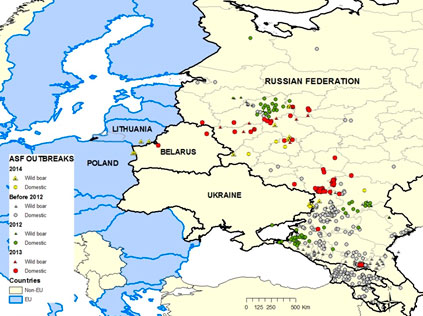 Outbreaks reported to OIE between 2007 and 19 February 2014 in Eastern Europe
Outbreaks reported to OIE between 2007 and 19 February 2014 in Eastern Europe
Source: Own elaboration with data from OIE, 2014
During the early years, ASF remained more or less confined in the Caucasus region, affecting Georgia, Armenia, Azerbaijan and southern Russia. However, since summer 2011, the ASF outbreaks became common in the central region of Russia, where the disease is present in endemic form, affecting both domestic and wild boar (Sánchez-Vizcaíno et al., 2013). After settling in this central area, ASF continued to spread westward, and the first outbreaks were reported in 2012 in Ukraine, and in 2013 in Belarus. One of the reported outbreaks in Belarus was located within 30 km of the border with Lithuania.
These outbreaks caused alarm in the EU, fearing a possible entry of the disease in the EU, as it has ended up happening. The January 24, 2014 the presence of two death wild boar in Lithuania, positive to ASFV was notified to the OIE (OIE, 2014a). These wild boar were found within 15 km of the border with Belarus. The laboratory analysis confirmed the presence of ASFV in the wild boar by PCR technique. The virus was also. Antibodies were also found in tissue exudates. Another positive wild boar was also found dead in Poland in February 17, located only 900m from the border with Belarus (OIE, 2014b).
These are the first two EU countries affected by ASF from outbreaks in Eastern Europe. In both cases, the entry of the disease came from wild animals, which highlights the role that these animals may have in spreading the virus under favorable conditions. The fact that the infection has reached the gates of the EU through wildlife not only confirms the absence of effective control measures in the affected areas, but also the potential presence of the virus in much broader regions than the officially notified.
Sources:
- Sánchez-Vizcaíno JM, Mur L, Martínez-López B. African swine fever (ASF): Five years around Europe. Vet Microbiol. 26; 165 (1-2):45-50.
- World Organization for Animal Health, 2014a: WAHID database. Informe de notificación inmediata, OIE Ref: 14690.
- World Organization for Animal Health, 2014b: WAHID database. Informe de notificación inmediata, OIE Ref: 14793.
1.500.000 doses of vaccine against BT
Almudena Sánchez Matamoros & José Manuel Sánchez-Vizcaíno
February 19th, 2014. SUAT-UCM
Ministry of Agriculture, Food and Environment distributed 1,500,000 doses of vaccine against serotype 4 of bluetongue virus.
Ministry of Agriculture, Food and Environment has acquired 1,500,000 doses sufficient to protect all sensitive species located in the compulsory vaccination, estimated at 250,000 head of cattle and 500,000 sheep. This measure is to achieve the eradication of the disease, reduce its spread outside of the restricted zone and reduce the economic consequences associated with the presence of the disease in farms.
This acquisition is included within the framework of regulations, published last November (AAA/2201/2013), on specific measures to protect livestock cattle and sheep against the disease.
Related information: MAGRAMA



